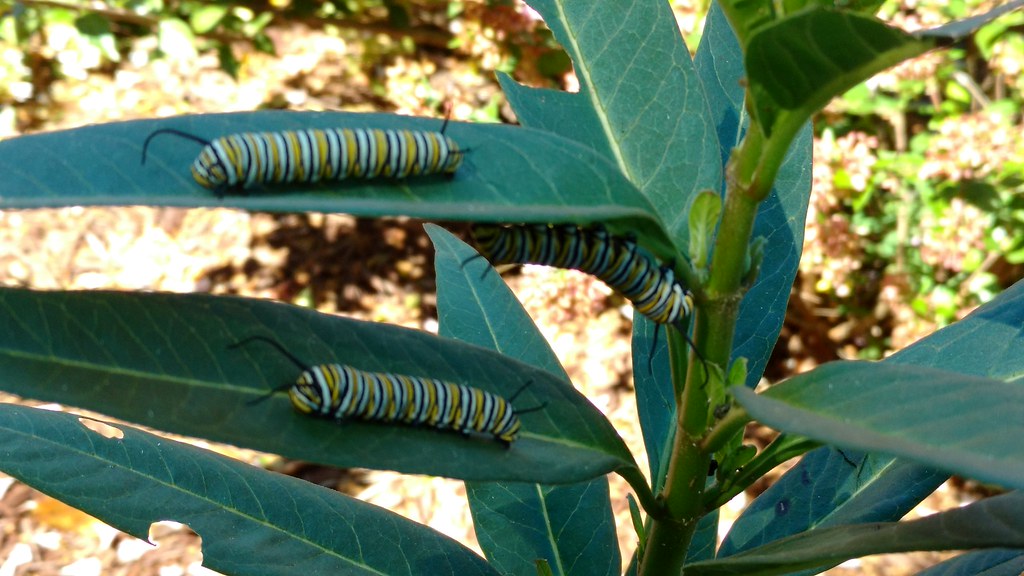
It is monarch haven here in Tiger Way Gardens and I have been enjoying all of the baby butterflies-in the form of caterpillars-tremendously. I thought I'd share a few with you all today. Above we have three monarch caterpillars munching on Asclepias tuberosa, aka butterflyweed. I started all of my butterflyweed from seeds in January 2016 via winter sowing. The plants have all been planted in the gardens and many are now blooming. Most all of the plants have monarch caterpillars feasting on them. Butterflyweed is easy to start from seed and I definitely recommend winter sowing for them.
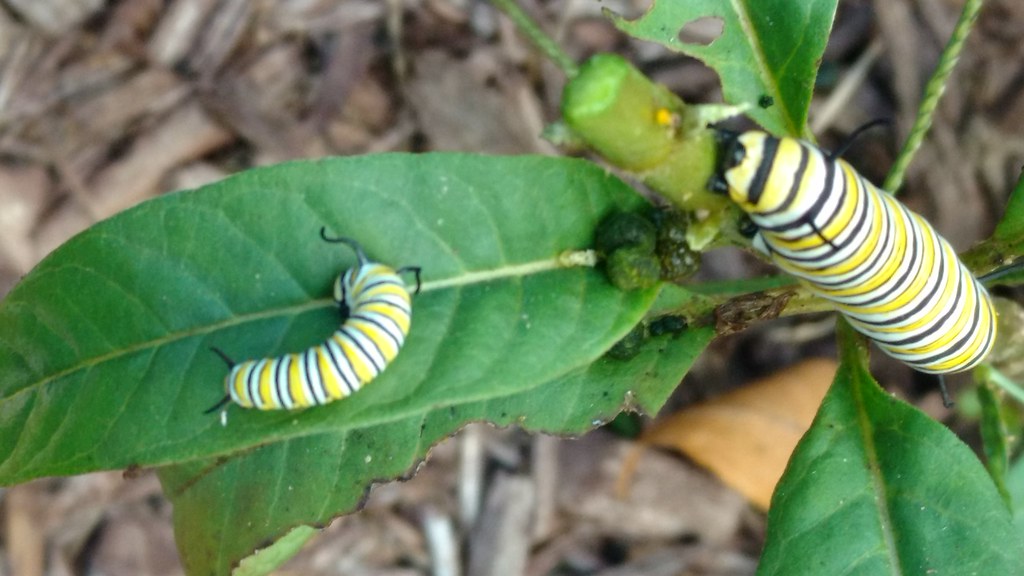
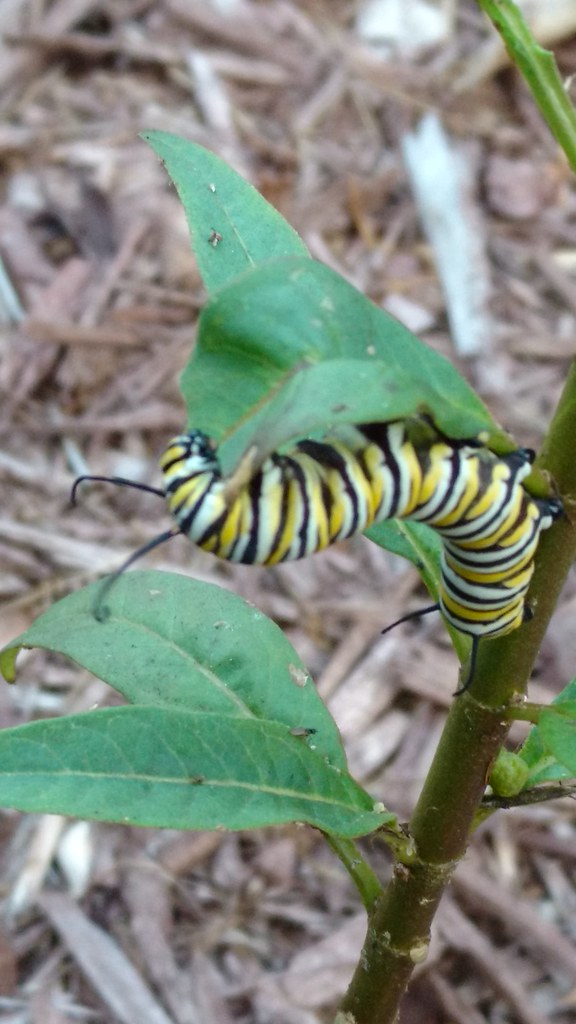
The pictures are not the very greatest because they were taken with my phone but it was all I had at the time.
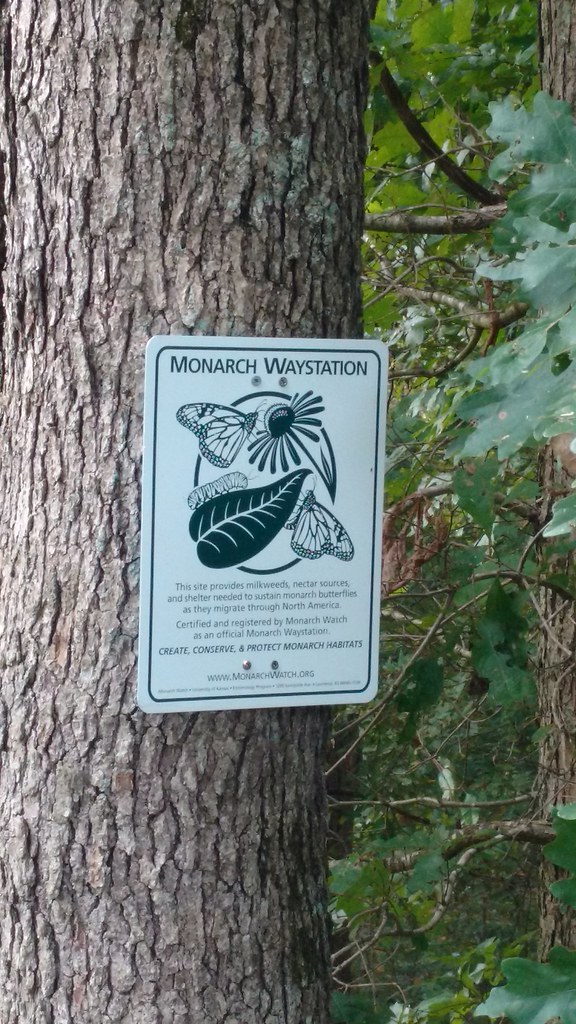
Last year I had my property certified as a monarch waystation and I'd say judging by all the monarchs flitting about laying their eggs here we have become a pretty good monarch waystation.This is not the first year I've had monarch caterpillars but the population has exploded over last year's population. All of the newly planted milkweeds have made quite a difference.
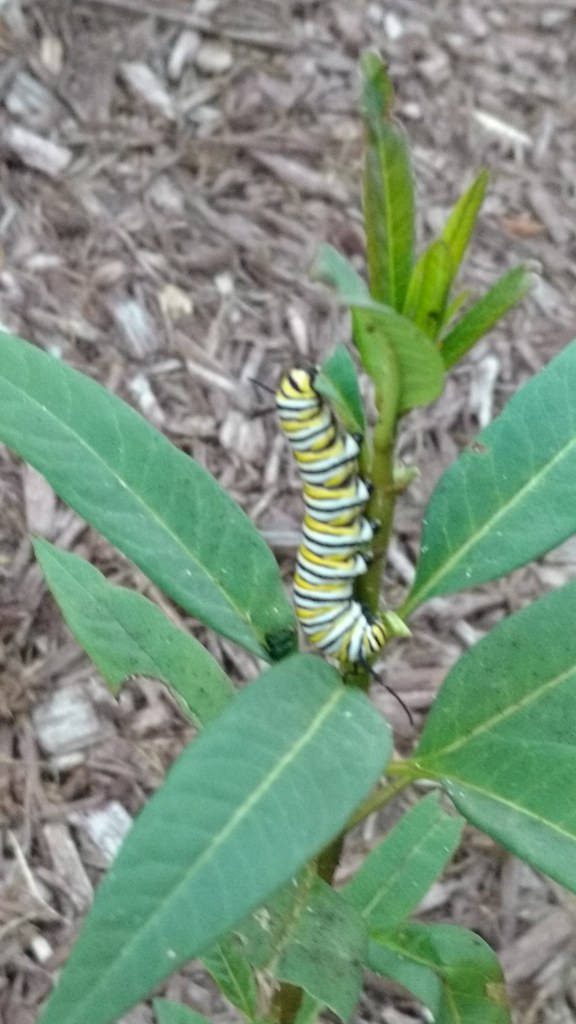
One monarch caterpillar can completely eat a butterfly host plant to the stem. All of the host plants for monarch are plants in the asclepias family. Things such as the above mentioned butterflyweed, swamp milkweed, whorled milkweed, showy milkweed, redring milkweed, common milkweed, and many more.
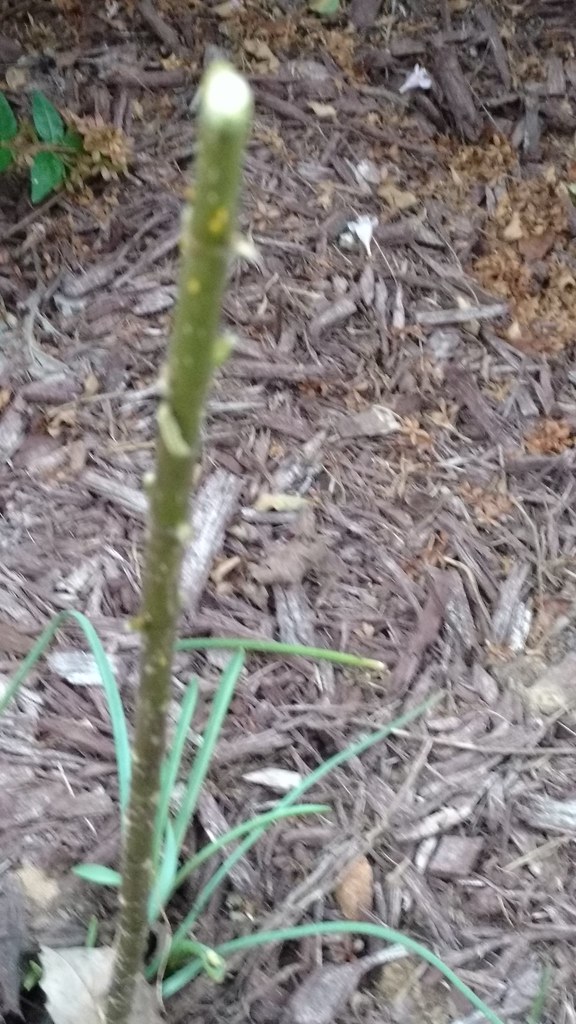
This stem above is all that remains of swamp milkweed and as you can see there are now NO leaves on it. I ordered 100 swamp milkweed plants and 100 whorled milkweed plants from Monarch Watch last summer. I did not receive any plants until this summer--but they did finally come. I have planted out all of the swamp milkweed but not all of the whorled milkweed. Two hundred plants are a LOT to plant out on the property so it is a slow process for me. Hopefully we'll get some rain soon so I can finish planting all of the milkweed. This milkweed will recover and I do not worry that it is leafless.
I have tried to restore our property to a fairly natural habitat which includes wildlife areas that involve not only flowers, but trees and watering and sheltering spots for pollinators as well as wildlife. The milkweeds were an addition for the monarchs. I was absolutely delighted to see monarchs not only on my butterflyweed but also on the swamp milkweed. All of these plants are pesticide free and are growing in gardens. I really haven't checked the wild milkweed yet for caterpillars but hope they are playing host as well as the cultivated plants I grow.
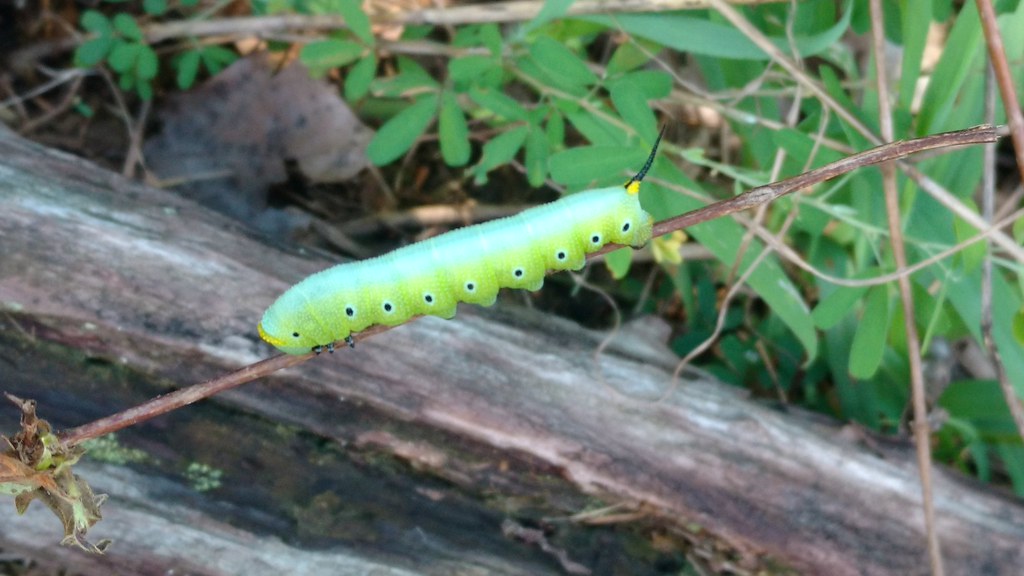
Talking about plants being eaten to the stem this here is what I believe to be a snowberry clearwing moth caterpillar. I don't have any snowberry plants in my garden but these caterpillars will also much on honeysuckle (Lonicera) and bush honeysuckle (Diervilla) and I do have both of them on the property. This caterpillar was most likely munching a good stand of lonicera nearby. Many people see these 'hornworms' and automatically kill them. I think that is so sad. I try very hard not to kill most things. I make exceptions for ticks and known pests. Not all 'hornworms' are bad and even if they do eat plants the plants will grow back. I promise you. I've had several batches of monarch caterpillars this year and just when I thought the butterflyweed was dead and gone it comes back! The relationship between caterpillars and their host plants must be a reciprocal one or both might die. For sure if a caterpillar killed every host plant it ate, then there would be no more host plant foods and no more caterpillars. So please, do not be alarmed when your plants disappear. They will rebound. Even tomato plants with hornworms on them will rebound depending on the time of the season. If you must 'save' your plant from hornworms, please move the caterpillar to a more appropriate plant or, better yet, plant extras for the caterpillars. Hornworms make a terrible squeal when killed and I'd love to spare you from hearing it!
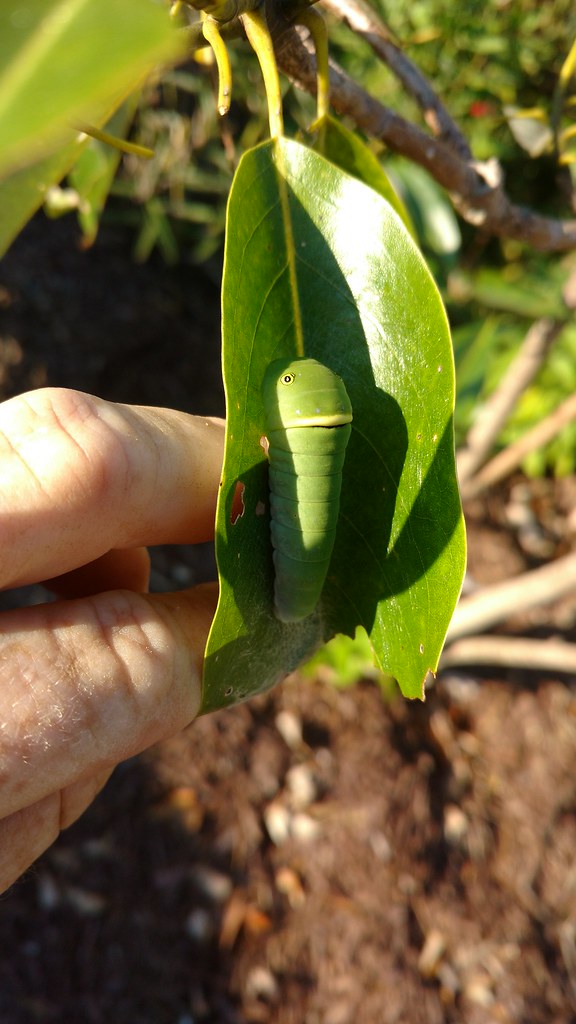
I came back from a mini trip and the first thing I noticed was my sweet bay magnolia; which is in a very prominent position out front; was nearly defoliated! Sweet bays are semi evergreen here in most of Tennessee, and I had been nurturing this one for over a year. It is doing very well now so all of the leaves being gone-eaten-was quite noticeable to me. I looked closely and I discovered the culprits! These two caterpillars are some type of swallowtail. I think perhaps Eastern Tiger Swallowtail but I am not sure. These are fairly common caterpillars though I have never seen them before. We do have tons of swallowtail butterflies here though and I love them. These swallowtail cats have what appear to be false eyes-can you see the one eye above? The false eyes help to scare off predators.
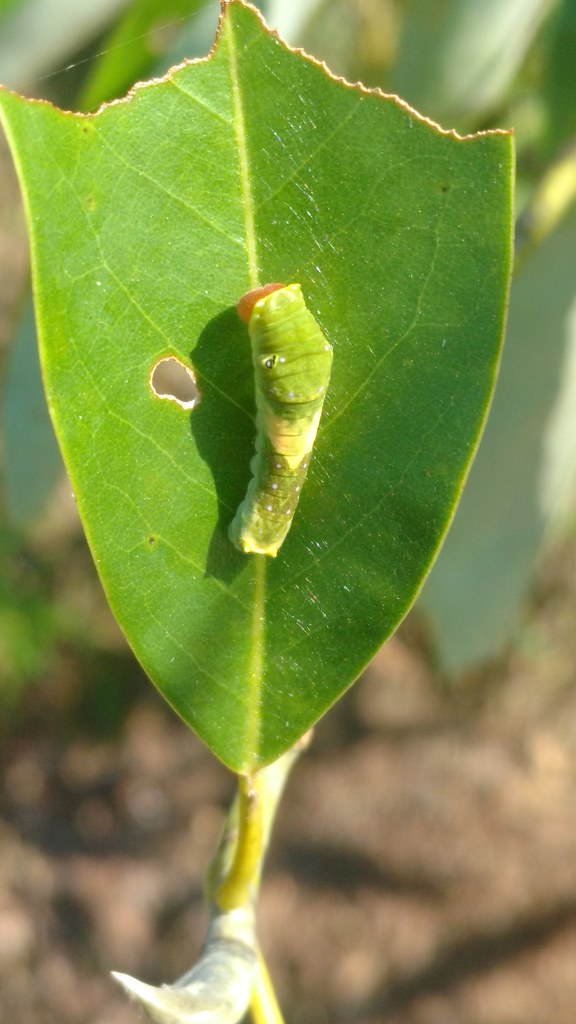
This is the same type of caterpillar but an earlier instar. It is disguised to look like bird poop with the cream colored blotch on its back. How cool is that?
Many folks bring caterpillars into enclosures to watch the process of them turning into a chrysalis and then hatching out as a butterfly. I have done this in the past but did not bring any of these caterpillars in to do so this year. I am really not sure how to do it completely properly and prefer to let nature do the work here....
in the garden.....enjoying the baby butterflies.